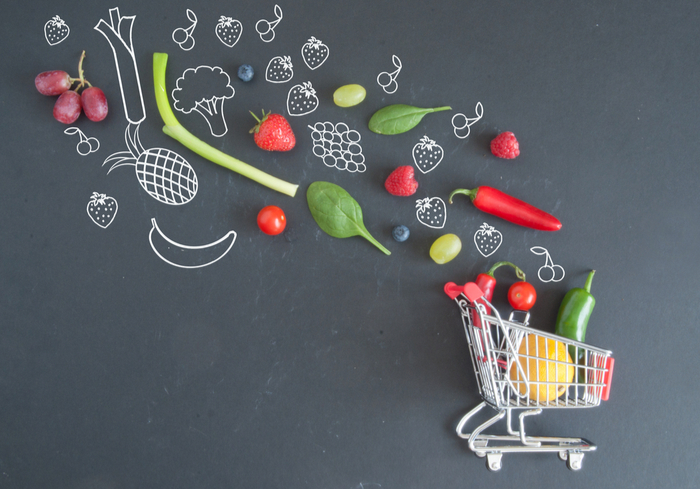2018 Recap: The Year In Grocery Innovations

Shoppers had new opportunities to buy groceries without having to walk through the aisles of their local supermarkets or wait in line at checkout counters this year, as grocers rolled out digital innovations in shopping and payments. This year, retailers from Kroger to Whole Foods Market brought new offerings ranging from cashierless checkout to personal shopping services to their stores.
Personal Shopping Services
In August, Amazon and Whole Foods Market announced the rollout of a curbside pickup service for groceries in Virginia Beach and Sacramento. To use the service, Amazon Prime members tapped into their Prime Now apps to place their orders and choose a pickup option at checkout. These shoppers, in turn, had a chance to receive free pickup if they wanted their order ready in an hour and met a minimum spending threshold or they were able to receive a 30-minute pickup window for a fee.
Either way, customers were able to drive to their store and have a Prime Now shopper load up groceries in their car instead of having to peruse the aisles themselves. Prime Now, AmazonFresh and Amazon Restaurants Worldwide Vice President Stephenie Landry noted in an August press release that “pickup from Whole Foods Market is a perfect option for customers who want to grab healthy and organic groceries at their convenience, all without leaving their car. A customer can order at 5:00 p.m., pick up at 5:30 p.m., and we’ll have their groceries loaded into their car just minutes after arrival.”
A month later, Walmart reached a milestone for its personal shopping service: It began receiving orders at its 2,000th location for grocery pickup in September. To place an order, Walmart shoppers used the company’s grocery app or website to make their product selections and choose a location as well as time for pickup. In a blog post, the company noted that “nearly half of all items” purchased through online grocery involve fresh products such as meat and produce. The offering comes as 4.9 percent of customers said the main reason they shop and make a purchase at a grocery retailer is because of personal shopping services, according to the PYMNTS Enterprise Retail Grocery report.
Cashierless Checkout
Amazon might have kicked off the year of cashierless checkout with its Amazon Go store in January, but the concept took off in other parts of the world in 2018. In Singapore, for instance, habitat by honestbee unveiled a 60,000-square-foot space that serves as a grocery store and a dining destination in October. In order to make a purchase at the store, shoppers download an app that connects to their credit cards or the company’s mobile payments wallet. After completing that step, shoppers can opt for a “scan and go” checkout or let a robotic system do the scanning, depending on the number of items they want to buy.
The process seeks to streamline the time-consuming part of the consumer’s shopping journey. CEO and Founder of honestbee Joel Sng said in an interview with PYMNTS earlier this year that customers “avoid the hassle of queueing at the cashier and waiting for bags to be packed. It allows them to fully immerse themselves into the retail space with convenience and efficiency.” Sng, however, would not compare his shopping experience to Amazon Go, but he did say that the company was looking to expand the concept to markets outside Singapore “in the near future.” In addition, he noted at the time that the company was now “exploring partnerships” for other countries.
Beyond honestbee and Amazon Go, companies such as Standard Cognition worked to put self-checkout technology in existing stores this year. The company uses cameras installed on the ceiling, along with computers in the back of the store, to track purchases. And, in lieu of providing a one-size-fits-all approach, Standard Cognition’s checkout systems can be installed in different formats. Standard Cognition Co-Founder and COO Michael Suswal said in an interview with PYMNTS in August that “We want stores to be able to create the experiences they want.”
The efforts of honestbee, Standard Cognition and Amazon Go come as the PYMNTS Enterprise Retail Grocery report found that 16.7 percent of consumers said the top reason they visited a grocer was because of scan and pay through mobile devices.
Stores Within Stores
Beyond cashierless checkout, experimental grocery-store-within-a-store concepts took hold this year. In December, Kroger and Walgreens announced that 13 Walgreens brick-and-mortar locations in Northern Kentucky would be getting small outposts dubbed Kroger Express. The space’s 2,300 selections would be informed by insights and customer data from the company’s data subsidiary 84.51°. (The locations chosen for the program also aren’t too far from the company’s Cincinnati headquarters.)
Kroger Senior Vice President of Merchandising Robert Clark said in a press release at the time, “the Kroger Express concept creates easy access to our most popular Our Brands products through a fill-in grocery shopping experience for Walgreens customers.” The effort by Kroger, even among its delivery efforts through Kroger Ship and autonomous vehicles comes as the PYMNTS Enterprise Retail Grocery report found that 90 percent of customers still shop and purchase items in a physical store.
The efforts by grocers to bring cashierless checkout, grocery pickup and stores-within-stores to shoppers this year suggest — along with the results from the report — that even in a digital age, brick-and-mortar innovations still matter to retailers and consumers.